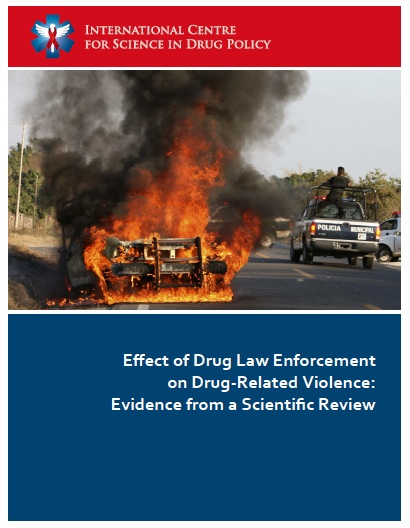Effect of Drug Law Enforcement on Drug Market Violence: A Systematic Review
Abstract
Violence is amongst the primary concerns of communities around the world and research has demonstrated links between violence and the illicit drug trade, particularly in urban settings. Given the growing emphasis on evidence-based policy-making, and the ongoing severe drug market violence in Mexico and other settings, we conducted a systematic review to examine the impacts of drug law enforcement on drug market violence. We conducted a systematic review using Preferred Reporting Items for Systematic Reviews and Meta Analyses (PRISMA) guidelines. Specifically, we undertook a search of English language electronic databases (Academic Search Complete, PubMed, PsycINFO, EMBASE, Web of Science, Sociological Abstracts, Social Service Abstracts, PAIS International and Lexis-Nexis), the Internet (Google, Google Scholar), and article reference lists, from database inception to January 24, 2011. Overall, 15 studies were identified that evaluated the impact of drug law enforcement on drug market violence, including 11 (73%) longitudinal analyses using linear regression, 2 (13%) mathematical drug market models, and 2 (13%) qualitative studies. Fourteen (93%) studies reported an adverse impact of drug law enforcement on levels of violence. Ten of the 11 (91%) studies employing longitudinal qualitative analyses found a significant association between drug law enforcement and drug market violence. Our findings suggest that increasing drug law enforcement is unlikely to reduce drug market violence. Instead, the existing evidence base suggests that gun violence and high homicide rates may be an inevitable consequence of drug prohibition and that disrupting drug markets can paradoxically increase violence. In this context, and since drug prohibition has not meaningfully reduced drug supply, alternative regulatory models will be required if drug supply and drug market violence are to be meaningfully reduced.
View the full article.


